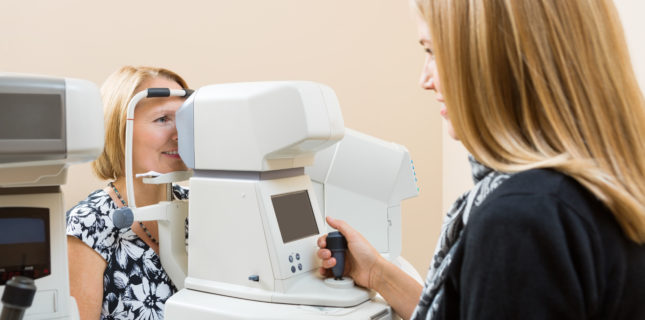
Talking to Patients About Glaucoma
January is National Glaucoma Awareness Month. It’s a good time to share information about this devastating, sight-stealing disease with your patients. It’s become even more important since the National Eye Institute announced just last week that “repetitive strain from common and unavoidable eye movements may play a role in glaucoma.”
Tip: As the disease progresses, educate the patient and caregiver about low vision resources and aids that can help with daily living.
Here are ten facts consumers and staff should know.
- INCIDENCE. More than three million Americans and 60 million individuals worldwide currently suffer from glaucoma.
- BLINDNESS. In the U.S., some 120,000 individuals are now blind from glaucoma. That accounts for 9-12% of all blindness in the country.
- INCREASE. Unfortunately, the number of individuals with glaucoma will increase to 4.2 million by 2030. That’s a 58% jump—an alarming number that needs to be communicated.
- THIEF. Glaucoma is called the sneak thief of sight, as there are no symptoms. In fact, up to 40% of vision can be lost without an individual even realizing it. Unfortunately, 50% of people with glaucoma have no idea they have the disease.
- TYPES. Most people don’t know there’s more than one kind of glaucoma. Patients diagnosed with primary open-angle (POAG) and angle-closure glaucoma experience increased intraocular pressure (IOP). A third type, normal tensions glaucoma, occurs when the optic nerve has been damaged despite a normal IOP. The just-released NEI-funded research has found that repetitive strain from eye movements may be one cause of this form of glaucoma.
- POPULATIONS. Glaucoma is most prevalent among African American and Latino populations. In fact, it is up to eight times more common in African Americans (especially those over age 40) than among Caucasians in the U.S.
- SIBLINGS. The familial link underscores the important of asking the right questions of patients. That’s because siblings of already-diagnosed individuals are also at increased risk of glaucoma.
- RISK. Other populations at risk include people over age 60, type 2 diabetics, and extremely near-sighted individuals.
- EXAMS. Routine dilated eye exams are imperative for this at-risk population. Share that with staff and, of course, patients themselves.
- CARE. Make sure they understand there are treatments that can help, but the longer they wait, the fewer options there are.
The bottom line? It all starts with asking the right questions. How do you stress the importance of regular dilated exams to ensure the early diagnosis of glaucoma? Tell us and share in the Facebook conversation here.
Sources: Glaucoma Research Foundation, National Eye Institute, Centers for Disease Control and Prevention, World Health Organization .
Comments are closed.









